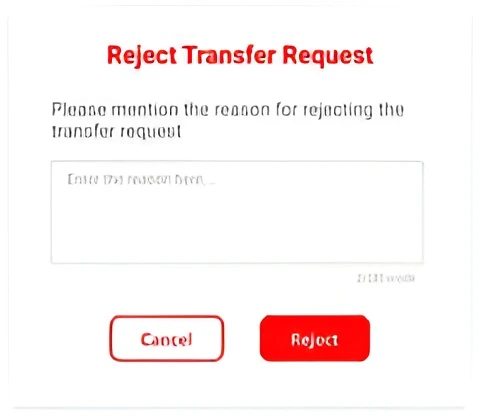Credit Transfer Rejected? How to Appeal in the ABC ID System
Credit transfer rejected? Don’t worry—it’s not the end of the road. The ABC ID system provides a structured process for appealing denied credit transfers, allowing you to present your case and ensure your credits are recognized. With the right documentation and approach, you can improve your chances of a successful appeal.
In this guide, we’ll walk you through the steps to take if your credit transfer is rejected and how to effectively navigate the appeal process.

Credit Transfer Rejected: Why It Happens and How to Fix It
Before diving into the appeal process, it’s essential to understand why your credit transfer request was denied. This will help you tackle the issue head-on. Common reasons include:
The course content might not match what the receiving institution expects.
Your institution might not be recognized by the receiving institution.
Sometimes, the grades you’ve achieved may fall short of the receiving institution’s standards.
Understanding these reasons will help you strengthen your appeal.
Step 1: Understand the Reason for Credit Transfer Rejection
Take a close look at the rejection notice or any communication you received regarding Merging Academic Records in ABC ID . Identifying the exact reason behind the rejection is crucial for the next steps. This way, you can tailor your appeal to address the issue directly.

Step 2: Supporting Documentation in Case of Credit Transfer Rejected
To ensure that your appeal is as strong as possible, collect all necessary documents that will prove the validity of your claim. These may include:
A detailed syllabus that outlines the course content and structure.
A brief overview of what the course covered.
These show your academic performance and grades.
Proof that the institution you attended is accredited and recognized.
These documents will support your argument that the course you took meets the standards of the receiving institution.
Step 3: Draft a Formal Appeal Letter
Your appeal letter is your chance to make a compelling case for your credits to be transferred. Here’s what you should include:
Name, student ID, and the course you’re appealing for.
Acknowledge the reason your request was initially denied.
Use your documentation to prove that the course content matches, and the grades are appropriate.
Politely request a re-evaluation of your transfer request.
Keep the tone professional and respectful.
Step 4: Double-Check Submission Guidelines
Each institution has specific procedures for submitting appeals. Make sure you:
Follow Instructions: Review submission guidelines carefully, as failure to do so could result in your appeal being rejected outright.
Include All Necessary Documents: Ensure that your appeal is complete and includes all supporting documentation.
Respect Deadlines: Pay attention to deadlines to ensure your appeal is processed on time.
Step 5: Submit Your Appeal and Be Patient
Once you’ve prepared your appeal and gathered all your documents, submit it to the relevant department, whether that’s the Registrar’s Office or the Transfer Credit Evaluation Office. After submitting:
Stay Informed: Regularly check your email and the ABC portal for updates.
Be Patient: Understand that reviewing appeals takes time. Avoid repeatedly contacting the institution unless necessary.
Step 6: Follow Up if Necessary
If you haven’t received any updates after a reasonable period, don’t hesitate to follow up:
Be Professional: A polite inquiry can go a long way in keeping things on track.
Know the Timelines: If you haven’t heard back by the expected date, it’s okay to ask for an update.
Step 7: What to Do If Your Appeal Is Denied Again
If your appeal is rejected for a second time, don’t give up! Consider these next steps
Additional Tips for a Successful Appeal
Ensure that all your documents are organized, clear, and legible. A messy submission can hurt your case.
Keep the tone of your appeal professional and respectful at all times.
Don’t wait until the last minute to submit your appeal—timely submissions increase your chances of success.
Even if the first appeal doesn’t work out, don’t hesitate to ask for a second review or inquire about alternative solutions.
FAQs
Final Thoughts
Appealing a credit transfer rejection doesn’t have to be a daunting task. By staying organized, understanding the reasons for rejection, and following the appeal process carefully, you can improve your chances of success.
Don’t be afraid to persist and seek feedback if necessary. Whether you’re working on the first or second appeal, taking a strategic and professional approach will always give you the best shot at a positive outcome.





